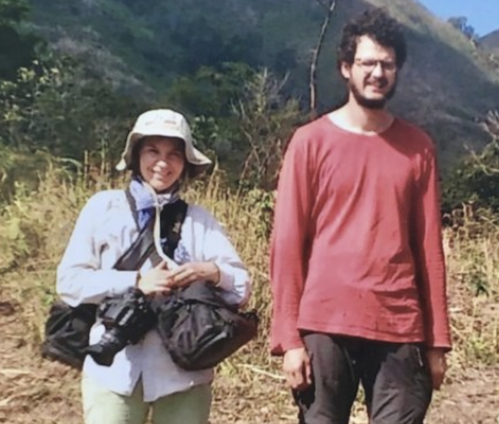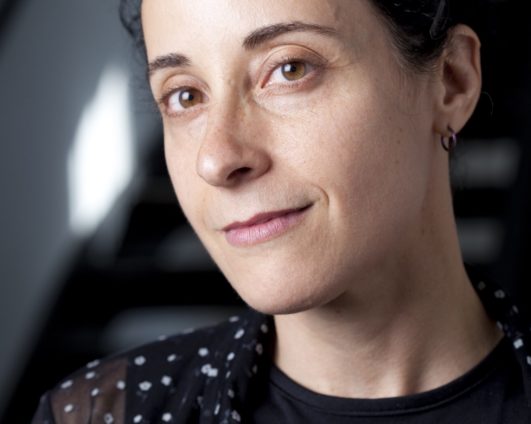Climate, Culture & Knowledge
Lena Dobrowolska, Teo Ormond-Skeaping, Joe Smith, Renata Tyszczuk – Future Scenarios: the artist as climate change researcher
Irida Ntalla – Feeling climate change issues in interactive and immersive environments
Michelle Stewart – Due North: contemporary Indigenous New Media and Ecological Knowledge
Future Scenarios
Future Scenarios is an ambitious, multi-platform body of work that has resulted from the 2016-17 Culture and Climate Change: Future Scenarios residency. The intense year-long residency explored the idea of an artist as climate change researcher by placing artists in contact with a network of climate change scientists, researchers, policy makers and institutions.
Future Scenarios comprises of three main strands of work: a body of photographic works an artist film installation and an interactive documentary. The work has been produced in Lao PDR, Bangladesh, The United Kingdom and Uganda. The work has been developed through an in-depth research process and a rigorous ethical consideration in the production of the work. We seeks for the work to operate in a nuanced, sensorial way allowing the audience to develop their own indyvidual responses and inspire inquiry into the subject.
Central theme of Future Scenarios is the reconsideration of the narrative of vulnerability to, and responsibility for climate change so much explored in films such as Al Gore’s “Inconvenient Truth” or Yann Arthus- Betrand’s “Home”. The project interrogates this old age narrative, which still seems to shape the possibilities of imagining of our collective futures. The project seeks to redefine what vulnerable and responsible mean, exploring the stories of contemporary subsistence living and food insecurity, rural urban migration in relation to sea level rise and the status of a displaced ( a refugee) exasperated by the combination of climate stress and conflict.
Over the last year we have learnt how the narrative of vulnerability that once surrounded those nations most vulnerable to climate change has developed into a narrative of resilience and adaptation. The countries once thought of as helpless in the face of climate change are now emerging as leaders in the development of mitigation and adaptation strategies, the use of
indigenous knowledge, research into innovative policies such as loss and damage, renewables and are the closest to decarbonizing their economies, even though as group they have contributed the least to total global carbon emissions.
By questioning these roles, we intend to create a more inclusive context for entering the climate change discourse, where we all can find ourselves implicated in climate change but not on the bases of binary divisions of victimhood and power, as we are all vulnerable to and all responsible for climate change. By doing so we hope that we can rediscover that we all have a role to play
in the collective imagining of the yet-to-be defined climatic futures.
The completed project will be delivered in 2018.
Feeling climate change issues in interactive and immersive environments
Digital art practices frequently embrace interactive, immersive and ambient
aesthetics, creating experiences that impact ‘new modes of sense perception’
(Ranciere, 2004: 9), participation, communication and engagement. The
paper will critically examine the affective dimensions of experience-centred art
installations with the focal point being climate and environmental change. The
significance of artistic and cultural responses to climate change is vital in
order to engage people in an emotional rather than only intellectual way.
Climate change issues are recognised but not seen (Norgaard, 2011), often
viewed as a far away future, a distant threat due to ‘a lack of direct
experience’ (Moser & Dilling, 2010: 3). The discussion of this paper is initiated
by the findings from an empirical on-site audience research at the High Arctic
digital art installation, a collaboration of artists and scientists at the National
Maritime Museum London. The poetic interactivity of the installation is
perceived by the visitors as embodied, intense and emotional, driven by
feelings, stimulating the imagination of a direct relationship with the Arctic
landscape, arguably bringing distant places closer and making them tangible
and affective. To think affect is to think social (Gilbert, 2004), but the affective
encounters in such environments often challenge expectations of a collective
force, raising questions about the individual and the collective, the ‘apart’ and the
‘together’ (Ranciere, 2011: 59). What is the role of the bodily relationship with sound,
listening and movement in these mediated experiences of crisis?
Images are not enough, but what are the nuances of such forms of displaying
climate change, encounters and feelings of guilt, power or inaction? The
paper discusses a number of examples of experiential, temporary type of
exhibitions that may merely entertain us as a ‘form of consumerist hyperactivism’
(Ranciere, 2011: 21) but may also negotiate new forms of
pedagogies and cultural consciousness.
Keywords: interaction, immersion, climate change, affect, audiences
References
Gilbert J. (2004) Signifying Nothing: ‘Culture,’ ‘Discourse’ and the Sociality of
Affect. Culture Machine, Vol 6
Norgaard, K. M. (2011). Living in Denial: Climate change, emotions and
everyday life. Cambridge, MA: MIT Press.
Moser, S. C. and Dilling, L. (2007) “Toward the Social Tipping Point: Creating
a Climate for Change,” in S. C. Moser and L. Dilling (eds) Creating a Climate
for Change: Communicating Climate Change and Facilitating Social Change,
pp. 491–516. New York: Cambridge University Press
Ranciere J. (2004). The Politics of Aesthetics. London: Continuum
Ranciere J. (2011). The Emancipator Spectator. London: Verso
Due North: contemporary Indigenous New Media and Ecological Knowledge
As Indigenous communities confront the immediate effects of climate change, the north becomes a temporal
index of future well-being. How are Indigenous artists crafting media art that makes present the climate
realities of the north coming due in the futures of the south? Given the geographic distance of Indigenous
communities –often by colonial design – how do artists make Indigenous experience present to non-
Indigenous majorities?
Recent Indigenous works suggest at least three strategies for engaging non-Indigenous audiences in a shared
reality narrated from Indigenous perspectives. These approaches – testimony, dialogue (reconciliation), and
admonition (bellwether)—comprise aesthetic and political appeals to counter the effects of cultural distance,
political neglect, and climate change denial.
Certain works, like Kevin Lee Moore’s God’s Lake Narrows (2012), begin with testimonial forms, such as
photography and narration, weaving these into newer interactive appeals to invite “southern” audiences to
engage the visual landscape of the remote reserve in a new light. Interactivity is increasingly central in these
endeavors, as an analysis of the Iñupiat nation’s collective video game, Never Alone/ Kisima Ingitchuna (Cook
Inlet Tribal Council and E-Line Media, 2015) and Kaheró:ton’s interactive animation, Xinona (National Film
Board of Canada, 2017), will illustrate.
Finally, the “north,” in the work of contemporary Indigenous media artists, folds in a temporal dimension. No
longer mere “hinterland,” “a land behind,” the north represents a shared future. On the frontlines of climate
change, Indigenous film and media makers become heralds, promoting local ecological knowledge (e.g., Inuit
Knowledge and Climate Change (Zacharias Kunuk and Ian Maura, 2010) to the global community in the face of the
fast-moving horizon of environmental change.
I argue that Indigenous new media artists are using interactive forms to bring “southern” audiences into
contact with contemporary Indigenous experience in creative ways. In so doing, the north as shared fate, as a
kind of precocious future, comes into view and local Indigenous knowledge is revealed as mode of ethical
knowing and acting for cultural reconciliation and ecological politics.





